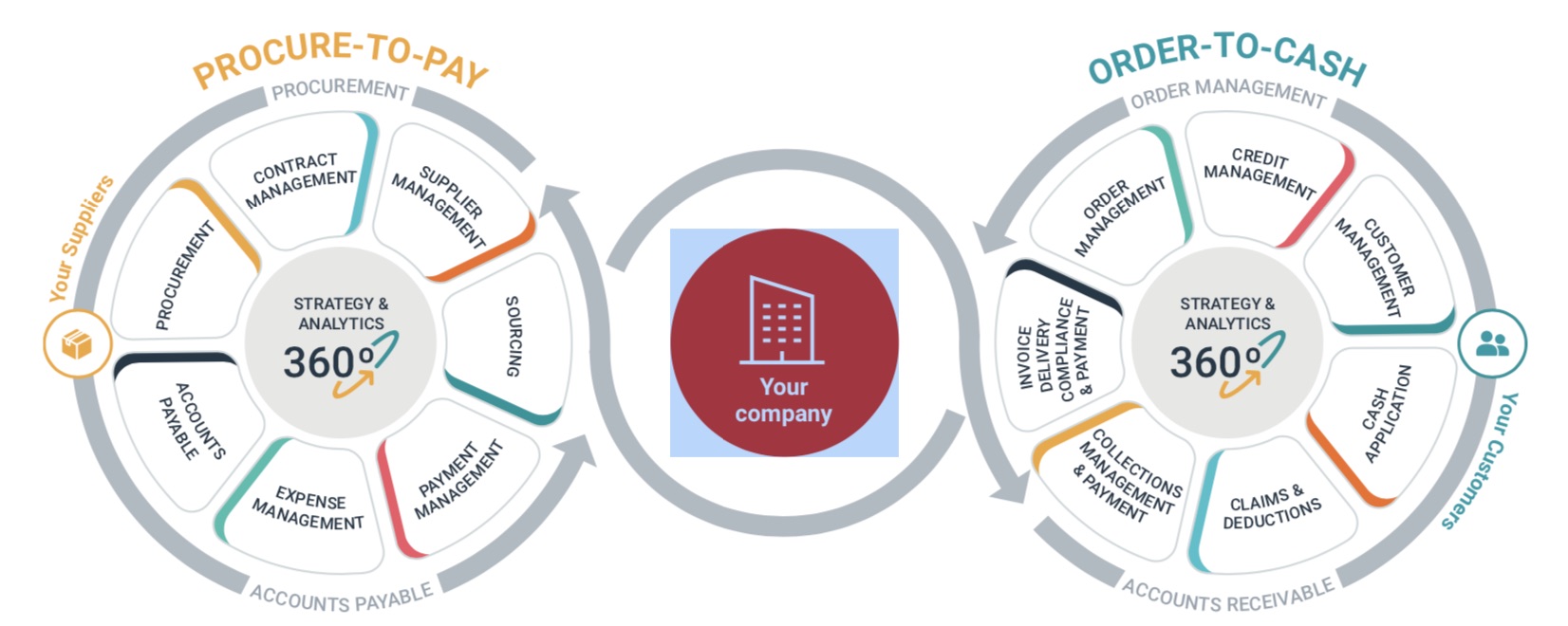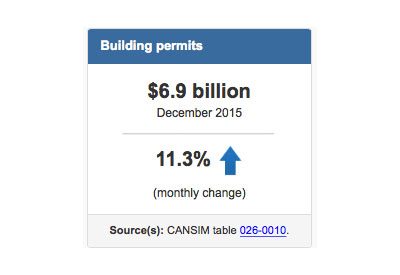Digital Transformation of Core Business Cycles: Creating a Highly Efficient Enterprise with AI-Driven Automation

Mar 24, 2021
As the world we live in continues to evolve and become more digital, the way we do business must follow suit. And while your current manual processes might be cutting it right now, it won’t be long before competition and emerging technologies render “business as usual” completely obsolete. Here’s why.
1. Even if you’re not changing, your competition is. Aside from the strategic benefits of digital transformation like end-to-end visibility, cost savings, increased productivity, etc., there’s the simple fact that we’re living in the “Digital Age”, and your competition has already begun changing. They’re becoming more agile, efficient, and are taking both customer and employee experience to new levels. If you can’t keep up with competitors at a base level, your business just might become a thing of the past. Let manual processes stay in the past, not you.
2. You could be saving large amounts of time and money. The process bottlenecks that result from paper-based methods are not in short supply — from the time it takes to locate files in cabinets, file documents, track down lost or misfiled documents, stuff and mail out envelopes, and all the other tedious, time-consuming steps that are required in manual environments. These slowdowns translate directly to money wasted on staff’s hours spent doing said activities and increase the risk of costly human errors.
3. Your customers and suppliers are demanding it. With digitization comes accessibility and data — both key factors in enhancing customer experience and supplier relationships.
Customers and suppliers need a reason to choose to do business with you. And with their needs constantly evolving and demanding more personalized, seamless experiences, offering superior and easily accessible online support, self- service tools, and using valuable data to better meet those needs gives others a reason to choose you over the competition.
4. Your employees are demanding change too. Aside from business continuity and job stability, employees are calling for change for a number of other reasons. The Millennial generation is beginning to occupy a majority of the workforce, and they’re demanding more meaningful work — that means jobs requiring employees to do tedious, low-value tasks like data entry will continue to have a more difficult time attracting and retaining quality employees. When processes are digital, workflows are automated, and repetitive, manual tasks are eliminated, staff is given back that once-wasted time, and they can now use it to focus on more business- critical, customer-facing activities that actually add value to businesses.
5. Your business’s future depends on it. Now more than ever, businesses are recognizing the need for tools that enable workplace flexibility — like cloud-based document automation — and are preparing for any event that prevents staff from convening and risks bringing operations to a screeching halt. Disruptions in business will always arise, whether they are minimal or catastrophic. Organizations must prepare for such unanticipated interruptions by taking action now and adopting digital practices to future-proof and crisis-proof their businesses and protect the hard-working employees that keep them running.
Challenges of manual business processes
The obstacles posed by manual processes can result in major operational issues and have damaging effects on an organization as a whole. A seemingly small problem on the front-end of business can lead to a breakdown on the back end.
Front-end challenges
• High hard costs. Left unchecked, the typical hard costs associated with manual business processes (e.g., labor, equipment, materials, etc.) can turn into profit-eating pitfalls. Lengthy process times drive up labor costs, while paper-based methods add material and equipment expenses.
• Large amounts of errors. In manual environments, there is always a considerable risk of human error that can end up stretching out the business cycle and increasing operating costs. These errors and the delays they cause have a direct impact on cash flow, supply chain efficiency and financial performance.
• Limited visibility. Manual activities make it virtually impossible to source, track and analyze the metrics necessary to do this, making effective cash flow management quite difficult.
• Low productivity. Processes that rely on physical work will always take longer than ones built on automation. From locating and hand-keying information, to figuring out who should be contacted about what — it all adds up to low levels of productivity.
• Workplace inflexibility. Without having mobile/ remote access to vital information and core business functions, ensuring business continuity when unforeseen business disruptions occur is nearly impossible.
Back-end consequences
• High soft costs. The soft costs of manual business processes (i.e., those that are often difficult to measure) include low customer satisfaction and lost business opportunities. You won’t find them in the general ledger, but these costs hit a company’s bottom line hard.
• IT complexity. Managing convoluted processes and systems can create a never-ending nightmare for your company. IT complexities ultimately make it difficult to: control costs, easily modify applications, manage relationships and remain agile during periods of growth.
• Lagging process times. Without mobile access to vital processes (approving purchase requisitions, placing customer orders, etc.) and documentation (supplier invoices, purchase orders (POs), customer information, etc.), process slowdowns can happen simply because managers are out of the office.
• Disgruntled customers/suppliers. Front-end issues inevitably impact your customers/suppliers. Long processing times, along with lack of communication and errors along the way, never bode well for business relationships.
• Unhappy staff; siloed departments. Stuck in a repetitive work environment with little collaboration or open workflow between teams, even the best employees become unhappy. Because staff impact the happiness of customers and vendors, this is an important aspect of every business.
An introduction to automation
The cash conversion cycle has long been associated with physical, paper files. But with the rapid development and deployment of new, smarter ways to collect, store and analyze information, technologies born from the “Digital Age” have made the use of paper documents virtually obsolete.
The way we use technology has completely streamlined the way we live, communicate and do business across the globe, which begs the question: Why are so many organizations still using outdated, paper-based processes? By embracing digital transformation through process automation powered by Artificial Intelligence (AI), companies are able to create effective practices by cutting out inefficiencies that cost businesses significant time and money.
Assessing the value of automation
Procure-to-pay (P2P) and order-to-cash (O2C) cycles may appear independent of each other, but the processes within these cycles are inextricably intertwined — a problem in one area creates a chain reaction that ultimately affects other core processes. For those still using paper-based methods, many common obstacles lead to a lack of P2P and O2C efficiency, such as:
• lagging processing times
• high costs
• inaccuracy resulting from human error
• low process visibility
• lack of communication and siloed teams
• process bottlenecks when staff is out of office
At the core of automation’s value is its ability to reduce or eliminate time-consuming, manual activities and give back valuable time to staff to work on more strategic tasks. A single digital solution can automate the routing, processing and archiving of documents and promote collaboration through interactive tools. These solutions use machine learning to gather key data and improve process efficiency by automatically learning how to execute tasks faster and better.
Additionally, drastic and sudden changes in the global economy have recently brought the need for workplace flexibility to the forefront of business leaders’ priorities, as they work to create operations that better promote business continuity and future success. Flexible, cloud-based automation solutions are proving to be the most effective way to achieve P2P and O2C efficiency, saving organizations significant time, money and resources, and setting them up for success should disruptions in business ever occur.
The technology powering digital transformation
A tight partnership between humans and smart technologies like AI and RPA is key to optimizing team and individual performance while creating a more nimble, future-proof enterprise. AI-powered solutions are designed for multiple use cases and promote:
• less repetition. AI improves speed and accuracy within document processing by removing redundant tasks, while freeing up staff to serve customers and suppliers.
• greater agility. The combination of people and AI technology is the perfect foundation for accelerating employee onboarding and supporting company growth.
• business intelligence. Thanks to AI-based analytics being able to identify anomalies and even predict outcomes, users always make the best possible business decision.
What’s working behind the scenes…
• Robotic process automation (RPA). Much like a vehicle’s cruise control or an aircraft’s auto-pilot mode, RPA refers to software that can be easily programmed to do basic human tasks. Unlike AI, RPA doesn’t “learn” on its own and only works with structured data. RPA tools offer benefits across applications, such as automatically recognizing, extracting and reconciling data from new supplier invoices and customer orders.
• Process automation. Process automation is an Esker-specific term that describes a set of intelligent technologies that improve the daily routines of Esker users (e.g., language and currency detection, built-in recognition, automated document routing, etc.).
• Machine learning. A type of AI technology, machine learning uses algorithms to evaluate what users do on documents and data fields, and applies what was learned to make “informed” decisions. This includes functions like auto-learning, auto-fill and auto-correct, along with providing alerts on deviations. As the knowledge base fills in, recognition and automation rates increase.
• Deep learning. Deep learning is a subset of machine learning composed of algorithms that permits software to train itself to perform tasks by exposing multi-layered neural networks to vast amounts of data. Automated tasks include image recognition and analysis, predictive analysis and big data analysis.
How automation works
Using AI and RPA technology, digital solutions automate manual inefficiencies and low-value tasks with tools that unify teams and their operations within one, integrated platform. Cloud-based automation allows businesses to power their digital transformation across P2P and O2C processes, uniting customers and suppliers like never before. Organizations can choose to automate one process at a time, or better yet, they can automate their entire cash conversion cycle with a single platform.

Procure-to-pay automation
In today’s ever-evolving and increasingly competitive landscape, businesses are feeling the pressure more than ever to drive cost and time savings to become more agile, stay competitive and promote business continuity. And with such a large impact on financial and operational integrity, unifying P2P processes with automation is the best way to maximize profitability and efficiently manage cash flow. Whatever problems arise in procurement are often felt by the AP department, making it increasingly important to digitally transform P2P processes end to end to create a seamless, holistic P2P cycle.
Here are the top benefits of automated P2P cycles:
• greater process control and efficiency
• improved spend management and spend policy compliance
• better employee experience and collaboration with key suppliers
• increased capture of discounts and stronger bottom line
• workplace flexibility enabled by cloud-based infrastructure
• enhanced collaboration by eliminating procurement and AP siloes
What’s needed to reach the next level in AP?
• Procurement. Following the procurement process can be tricky if you don’t have the right solution in place. When procurement processes are automated, users can create purchase requisitions and invoices online that are automatically routed through the appropriate approval workflow. Purchase orders (POs) are created in a few clicks (even from line items from multiple invoices) and once the system receives the invoice, it continuously checks for the goods receipt and performs a three-way match to ensure accuracy. Mobile applications also allow managers to approve purchase requisitions and invoices, and review process metrics from anywhere, at any time.
• Accounts payable. By automating workflows, AP automation can reallocate time once wasted on manually processing supplier invoices and save on costs associated with paper invoicing methods. Improve relationships and communication with key suppliers by providing them with self-service vendor portals, and benefit from increased capture of early payment discounts. Speedy, AI-powered invoice data capture allows data to be automatically extracted from PO and non-PO invoices and, if necessary, routed for approval. Tailored dashboards display important performance metrics and reports, while a mobile application allows convenient, on-the-go approval and management of invoices.
• Order-to-cash automation. A problem in one area of the O2C cycle results in further issues down the line — that’s why the key to achieving O2C efficiency is uniting the multiple departments, teams and technologies involved in the O2C cycle. The best way to achieve that? Automating O2C cycles end to end. Cloud-based O2C platforms enable businesses to seamlessly manage all customer interactions through a single, centralized solution. Powered by AI technology, O2C solutions help to avoid slow fulfillment times, low customer experience scores and delayed customer payments by eliminating repetitive tasks, improving accessibility and communication, and strengthening customer relationships.
O2C automation can help businesses by achieving
• reduced O2C processing time and costs
• improved receivables and DSO rates
• strengthened relationships through better customer experience
• freed-up resources to focus on customer-facing activities
• elevated collaboration among teams and end-to-end transparency Streamlined payments and cash flow
• workplace flexibility enabled by cloud-based infrastructure
• Order management. Incoming customer orders are the catalysts that launch the O2C cycle. When an order arrives in the system, AI- driven data capture automatically extracts relevant data from orders, no matter if they are text or image-based documents, and any exceptions are flagged for review. After approval, order data is integrated into the ERP system and a copy is archived for a complete audit trail. Custom dashboards display data like the number of open issues or processing time, while a customer portal allows for orders to be placed from an online catalog and for staff to quickly communicate with customers. Mobile applications give both customers and sales staff the freedom to place and track orders anytime, anywhere.
• Accounts receivable. By automatically extracting invoice data and converting it into the format, an automated AR solution simplifies the processing and delivery of customer invoices and associated documents. For the sender, this means every customer invoice can be sent, archived and tracked electronically. On the other end, invoices arrive by mail, electronically, or via a customer self-service portal — depending on customer preference. Customers can then pay open invoices directly from a secure online portal. All documents are tracked and tailored reports help reconcile payment with bank statements.
• Collections management. Collections management automation combines process automation and CRM properties to streamline the entire collections process and bring AR leaders the visibility needed to properly manage their receivables. All stakeholders involved in collections benefit from automated tools and customizable dashboards to collaborate more efficiently and get paid faster. Maximize collections efforts with automated payment reminder emails and an online self-service portal that lets customers connect with staff members, pay bills and apply credits — all customer data, exchanges, invoices and collections data are stored in a secure, central location. Custom KPIs and personalized reports go beyond DSO to analyze every aspect of your collections process.
• Payment. With an automated payment solution, customers can choose from a variety of options to make online payments without delay, including credit and debit cards, ACH, EFT, SEPA and more. Customers can even set up auto- pay or schedule payment at the appropriate date. By providing a quick and easy way for customers to make payments on their own, they’ll have no reason not to pay and can even benefit from early payment discounts by paying before the due date.
• Cash application. Although electronic payments have simplified the payment process for customers, digital cash application processes still have their challenges, as incoming payments aren’t always straightforward. These issues can create an environment that makes cash application difficult and time consuming. Cash application automation helps by automating the manually intensive process of matching payments received from all incoming payment information sources. Automating cash enables cash application personnel to better control cash flow in real time and focus on higher-value activities such as addressing disputes and deductions more quickly.
Source: Esker, a leader in AI-driven process automation software, helping financial and customer service departments digitally transform their procure-to-pay (P2P) and order-to-cash (O2C) cycles. Used by more than 6,000 companies worldwide, Esker’s solutions incorporate artificial intelligence (AI) technology to drive increased productivity, enhanced visibility, reduced fraud risk, and improved collaboration with customers, suppliers and internally; www.esker.com.
Photo by Markus Spiske on Unsplash











